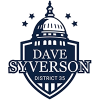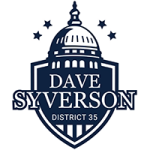Lawmakers returned to Springfield this week as Illinois Governor Bruce Rauner delivered his first State of the State Address. In his speech before a joint session of the Illinois House and Senate, Rauner outlined his policy agenda which focused on job creation, education, revamping the state’s criminal justice system, and a push to implement governmental reforms like term limits and merging the Comptroller and Treasurer’s offices. Rauner expressed a desire to work in a bipartisan way to deliver results for the people of Illinois.
Also this week, it was revealed that under the current budget Illinois’ Child Care Program, administered by the Department of Human Services (DHS), has less than one-half of the funding needed to fully operate the program for the rest of the fiscal year.
Governor Rauner voiced his support for raising Illinois’ minimum wage during his State of the State address, signaling his intention to work with members of the General Assembly on a proposal. One day later, however, Senate Democrats rushed through a bill to increase the minimum wage without taking time to work across the aisle or with the Governor on the issue.
One of the biggest issues of the 2014 spring session, education funding reform, has been reintroduced in the new legislative session. Senate Bill 1, the new version of last spring’s Senate Bill 16, continues to raise concerns, especially from suburban lawmakers.
Rauner emphasizes new beginnings, bipartisan agenda in SOTS
Though he stressed the challenges facing Illinois, Governor Bruce Rauner also underscored his willingness to work in a bipartisan way to deliver results, when he outlined his policy agenda during his first State of the State address before a joint session of Illinois lawmakers Feb. 4 in the House of Representatives chambers.
Rauner pointed to the state’s deficit population growth and stifled employment opportunities as the root of Illinois’ problem. The Governor emphasized the state’s top priority should be to make Illinois competitive again in order to grow more jobs. He cited Illinois’ current workers compensation, unemployment insurance and liability costs as impediments to economic growth, and stressed the need to address these issues.
Increasing employment opportunities for Illinois residents, particularly minority residents, was also strongly emphasized in the thirty minute speech. The Governor stressed the need for greater diversity in apprenticeship programs and floated the idea of a Minority Enterprise Small Business Investment Program as a way to boost minority entrepreneurs.
On the same day the Senate Executive Committee approved legislation that would increase the state’s minimum wage to $11 per hour by 2019, Governor Rauner stated his interest in raising the minimum wage—in conjunction with regulatory changes to help Illinois employers.
There was strong emphasize in the Governor’s remarks on empowering Illinois residents, including giving them the ability to control local government spending when it comes to property taxes, collective bargaining issues and government consolidation.
During his address, Governor Rauner revived his pre-election calls for term limits, and also outlined new restrictions on what he identified as conflicts of interest between campaign donors and elected officials.
Additionally, Rauner echoed some legislators’ calls to merge the Comptroller’s and Treasurer’s offices, and voiced his support for efforts to reform the state’s criminal justice system. The Governor announced his intention to hire more correctional officers to improve prison safety, support offender reintegration programs and improve the state’s parole system.
Governor Rauner also stressed his strong commitment to education, noting he plans to increase education funding for K-12 and invest resources in technical and vocational training.
Though the Governor touched on the state’s serious fiscal problems, he’s expected to detail them further in his budget address on Feb. 18. Governor and his staff have been working long hours analyzing Illinois’ finances in order to get a handle on the scope of the state’s problems. They’ve found that these issues are worse than previously reported, due to unrestrained spending and mismanagement by previous administrations.
Child Care Program shortfall raises concern
Inadequate funding of the state’s Child Care Program in the current fiscal year budget signed by former Governor Pat Quinn will lead to delays in payments in child care services. Under the current budget, the Child Care Program administered by the Department of Human Services (DHS) has less than one-half of the funding needed to fully operate the program as it is currently structured.
Quinn’s underfunding of the program has child care providers wondering when they will receive payment. Unless the General Assembly approves legislation giving Governor Rauner authority to approve additional spending for this program, DHS has warned child care providers their payments will be delayed and only include Federal funds.
The Rauner administration has underscored this shortfall is in no way related to Rauner’s Executive Order to address the fiscal crisis, explaining Governor Quinn deliberately moved forward with a budget that he knew did not contain the revenue needed to fully fund the program. Additionally, DHS was directed by the Quinn administration to run the program under status quo parameters, even though the administration was aware that doing so would create a funding shortfall during the second half of the fiscal year. The problem is compounded by years of program mismanagement by the Quinn administration, which has resulted in drastically increasing costs.
Governor Rauner’s Office of Management and Budget (GOMB) is currently working diligently with the legislature to identify a way to rectify the problem as quickly as possible.
Senate advances legislation to increase minimum wage
In his State of the State Address, Illinois Governor Bruce Rauner voiced his support for raising Illinois’ minimum wage and his intention to work with the General Assembly on a proposal. However, just a day later Senate Democrats rushed through a bill to increase the minimum wage, not providing time to work across the aisle and with the Governor on the issue.
In November Illinoisans voted in favor of a ballot question that asked, “Shall the minimum wage in Illinois for adults over the age of 18 be raised to $10 per hour by January 1, 2015?” Critics of the legislation approved by the Senate argue that it goes beyond the scope of the ballot question, ultimately increasing the minimum wage to $11 by 2019.
Senate Bill 11 would increase the minimum wage to $9 on July 1 of this year and then increase it incrementally by $.50 a year ultimately resulting in an $11 minimum wage by July 1 of 2019. It also takes away the ability of municipalities to institute their own minimum wage going forward. An exemption to this rule is carved out for the City of Chicago however, which could move forward with the $13 minimum wage ordinance adopted in December.
The bill does make an attempt to provide relief to employers of 50 or less by creating a credit against their withholding tax that would be equal to the increased wages they pay as a result of increasing the minimum wage. However, concerns have been raised that this provision essentially results in the taxpayers supplementing the increase and could encourage business owners to keep employees at minimum wage so that they could continue to receive the tax credit.
Senate Bill 11 now heads to the Illinois house where it faces an uncertain future.
Education Funding Reform Reintroduced as Senate Bill 1
Education funding reform, one of the 98th General Assembly’s hot-button issues, has resurfaced under new legislation in the 99th. Senate Bill 1, a reintroduction of similar legislation known as Senate Bill 16, is raising concerns among lawmakers.
As currently written, SB 1 advances an unbalanced redistribution of scarce education resources, pitting school districts against each other. Though lawmakers acknowledge the need to reform Illinois’ school funding formula, many voice concerns about any legislation that simply shifts current disparities and continues to create “winners” and “losers” among Illinois schools.
Concerns have been raised that some provisions of the bill may be redundant or ineffective, such as the inclusion of an adequacy study that is already conducted by the Education Funding Advisory Board (EFAB) every two years. Senate Bill 1 also includes a regional cost factor to account for different costs of living throughout the State, an idea that was previously rejected by the Education Funding Advisory Committee (EFAC) in 2014.
Additionally, the legislation alters how poverty would be calculated, reverting back to use of the Department of Human Services’ (DHS) low-income counts to calculate poverty (generally students at or below 200% of the Federal Poverty Level). This formula has proven to produce larger, potentially unsustainable poverty counts. Under the provisions of Senate Bill 16, poverty was based on free and reduced lunch counts (generally students at or below 185% of the Federal Poverty Level).
Because these tweaks come with a price tag, the sponsor, has requested a spending increase of $500 million to be associated with the changes made in the legislation.
In 2013 the bipartisan Education Funding Advisory Committee (EFAC) was created to study Illinois’ education funding formula and develop solutions to improve the disparity in funding between different areas of the state. The report that resulted from the committee led to partisan legislation (SB 16) that did not address specific concerns raised by Republicans, like fully eliminating the Chicago Block Grant or unfunded mandate relief. It seems that, once again, these concerns have gone unaddressed in SB 1.

